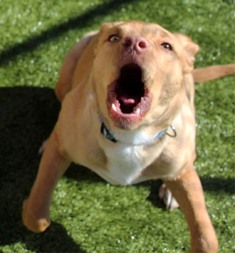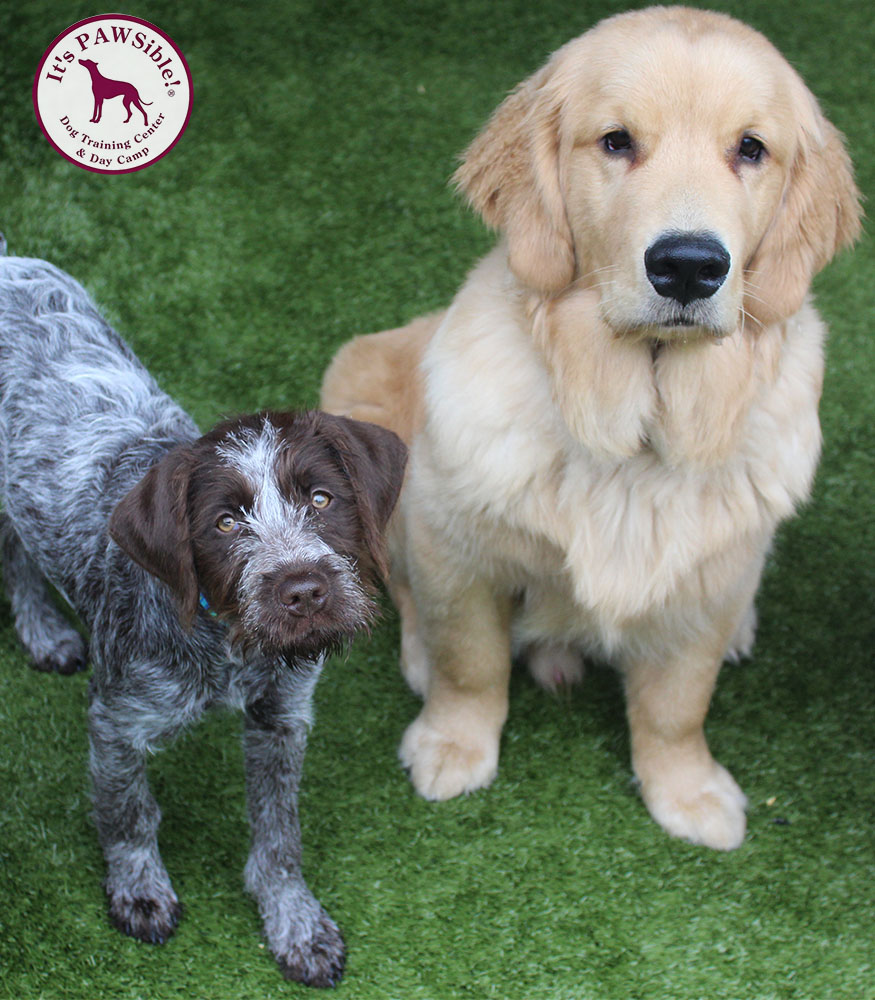This is a continuation of my series on how dogs communicate. This newsletter is about your dog's mouth.
Dog's communication can be very clear, but most often the communication between two canines or between canines and humans can be very subtle. Dog's communicate constantly, even when you don't realize they are.
In the last email about dog communication, I talked about the dog's eyes and how they are used in communication.
This email is about your dog's mouth and how he uses it for communication.
One obvious way a dog communicates with his mouth is barking. Sometimes people ask me how to stop a dog from barking. My answer back is a question: "in what circumstances is your dog barking?" There are so many reasons for barking, like protection of their property, giving warning, attention seeking from owners, and so many other reasons. That is a subject for another newsletter.
But how else does a dog communicate with his mouth?

First the relaxed dog: A relaxed dog can have two mouth positions and this is sometimes breed specific. Goldens, Aussies, and dogs who pant regularly may have a very calm, barely audible pant going when they are relaxed.
This looks more like a smile or a laugh face. Short coated dogs who don't pant as often may have a closed mouth but absolutely no tension in the lips. A relaxed or confident dog also would have those relaxed eyes I talked about in the last email.
How can you spot when a relaxed all of a sudden becomes alert? When a dog is alert, if he been panting, he will close his mouth. A dog that is not a “panter” will tighten up that mouth a little. I think this is the one mouth communication that is under-read a lot by new or novice dog owners. This is always the look that tells you need to do something to divert his attention.
An alert dog will either continue his alertness and then go back to relax, or the alertness will escalate to the next level. If that happens, the mouth will really tighten up, and you may hear growling or he will go right to barking.
 Let's go back to the closed mouth. If a dog is guarding something from another dog or a person, the dog that communicates well, will slightly wrinkle his muzzle. Next you will see a real lip curl. At this point things can quickly escalate may not be stopped until it's too late, a snap or a bite will occur.
Let's go back to the closed mouth. If a dog is guarding something from another dog or a person, the dog that communicates well, will slightly wrinkle his muzzle. Next you will see a real lip curl. At this point things can quickly escalate may not be stopped until it's too late, a snap or a bite will occur.
That's the thing that is kind of tricky as some dogs are much better at warning than others.
That's why you don't want to yell at your dog for growling, you want the growl! You want the warning. The most dangerous dogs give no warning.
Stress yawns: Often dogs will give a stress yawn. What kind of stress? Not like ours, like financial stress, but stress about a situation...an approaching dog or person, getting lost on the agility course, I see my dog Grin stress yawn a lot waiting for me to finish getting her breakfast in the morning.
Air snaps: An air snap can be in play and it can be a serious warning. When people say their dog tried to bite, it usually means the dog air snapped. If a dog wants to bite, he will usually be successful.
A happy dog: This is what we all want to see. A happy dog is a relaxed, confident dog. As you get to know your dog's communication better, you will work to get this facial expression.
A happy dog comes with being a trained dog. Trained dogs are much happier as they are clear on the rules and boundaries. My dogs are very lively, animated fun, protective of me, but they are also trained enough to be relaxed most of the time. They know what to expect each day so they are relaxed.
I hope this helps with your learning about dog communication. Knowledge is power. Have fun training and you’ll hear more in a couple of weeks about dog communication.





